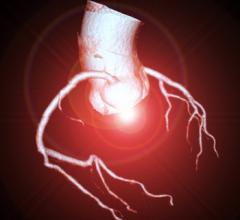Cardiac exams represent only about five percent of all CT procedures, but cardiac CT continues to generate the most interest at manufacturers’ exhibits as seen at the 2006 RSNA Annual Scientific Meeting. The fascination with Cardiovascular Computed Tomography (CVCT) remains high even though full reimbursement is not expected to occur until 2009, according to industry observers at RSNA. Despite encouraging signs such as all 50 states having Medicare Part B coverage for CVCT, full reimbursement is moving slowly.
Each state has now issued a Local Coverage Determination (LCD) for CVCT with most states following the LCD Model issued by the American College of Cardiology (ACC) in January of 2006.1 Although the LCD is in place, each facility must apply for reimbursement. Some of the CT vendors offer consulting to walk one through the process. Also, not all of the payors are reimbursing for CVCT. Most notably absent are Blue Cross and Blue Shield. The National Coverage Determination will be slower in coming since an NCD requires a formal, evidence-based process. Generally this means large, randomized controlled trials that demonstrate a benefit to the entire Medicare population.
One would think that using CT to quickly diagnosis the cause of chest pain in the ER and to eliminate more costly cardiac catheterization studies would be an immediate benefit to the patient and a cost savings over all. For example, Jason Cole, M.D., and his associates at Cardiology Associates in Mobile, AL, started using CVCT as a diagnostic tool following a nuclear perfusion study that was “mildly abnormal” or “equivocal”.2 Using CVCT afterwards in a series of 206 patients, Dr. Cole found no evidence of coronary artery disease in 29.6 percent of these patients, thus eliminating cardiac catheterization for them. The average cost per case dropped from $4,075 per case with cardiac catheterization to $1,809 per case with CVCT. Dr. Cole and his colleagues presented their results in a featured presentation in April of 2006 at the ACC Annual Scientific Session.
The HOPPS setback
However, later in 2006, the Centers for Medicare and Medicaid (CMS) issued a proposed rule change for the Hospital Outpatient Prospective Payment System (HOPPS)3 that set reimbursement for the CVCT procedures below the cost of performing the exam, according to the comment letter jointly issued by the American College of Cardiology, the American Society of Nuclear Cardiology, the Society of Cardiovascular Angiography and Interventions, and the Society for Cardiac Computed Tomography.4
Nevertheless, the HOPPS proposed payment for CVCT averages about $300 versus the $600 currently being paid. How this will impact the adoption of CVCT remains to be seen.
Payors are reluctant to jump on the CVCT bandwagon for several reasons. They worry that cardiac CT could be used as a screening tool or it could be a “layered” test that is another step on the way to the cath lab in addition to an EKG, echo and nuclear perfusion exam. Thus, the clinical studies are key to achieving full reimbursement for the study.
CT usage in noncardiac areas has dramatically increased in the last 10 years and has often replaced less expensive exams. For example, many hospitals have seen dramatically increased utilization of CT in the ER with a corresponding decrease in plain film radiography.
During the 2006 RSNA meeting, Dr. Joshua Broder, an assistant professor of Emergency Medicine at the University of North Carolina at Chapel Hill reported on a study performed at his institution.5 Researchers at Broder's institution examining CT utilization in the ER from 2000 to 2005 found dramatic growth for studies of a range of organs. Cervical spine CT use shot up more than 460 percent, albeit from a relatively low baseline. During the study period, the number of admissions rose by only 13 percent, and the severity of injury and illness changed little.
Although several single site studies, like the one done by Cardiology Associates, have been published, and others have been done using 16-slice technology, the large, multicenter trials employing 64-slice scanners are just getting started. The CorE 64 (Coronary Evaluation on 64) study is a multicenter, international trial that is just completing patient enrollment for over 300 patients. Some preliminary results may be presented at the ACC Scientific Session in 2007.
Results from most of the multicenter trials will not be out until 2008. These will then be reviewed for clinical efficacy and cost effectiveness. Then, most observers expect the full NCD to be in place for 2009.
The delay in reimbursement coupled with the higher price of 64-slice scanners has slowed the adoption of CVCT by cardiology centers. Although scanners are not being dedicated to cardiology, most buyers of 64-slice technology expect to be scheduling cardiac patients as well, especially for chest pain management. But given the slow pace of reimbursement, it is still possible that the technology may be adopted prior to the payment system.
Larry Sieb is a medical technology consultant and a member of the editorial board of
Diagnostic & Invasive Cardiology magazine. He can be reached at 920-648-8511 or at [email protected].
References
1. http://www.acc.org/advocacy/pmr/pdfs/
FINALModelLCDforCCTandCTCA.pdf Final Model for CCT and CTCA
2. ACC 2006 (807-4)64-Slice Computed Tomography Angiography Is a Cost-Saving Strategy for Patients With Mildly Abnormal Nuclear Stress Tests; Jason H. Cole, Vance Chunn, Gerry M. Phillips, Erik A. Eways, J. Andrew Morrow, M. Wail Hashimi, Ralph S. Buckley, Cardiology Associates, Mobile, AL
3. http://www.cms.hhs.gov/HospitalOutpatientPPS/Downloads/
CMS1506FC.pdf Medicare Program; Proposed Changes to the Hospital Outpatient Prospective Payment System and Calendar Year 2007 Payment Rates;
4. http://www.acc.org/advocacy/advoc_issues/hopps comment letter.pdf ACC, SNR, SCCT, SCA&I Joint Comment Letter on HOPPS Payment 2007 Payment Rates
5. http://rsna2006.rsna.org/rsna2006/V2006/conference/
event_display.cfm?em_id=4427881


 December 11, 2025
December 11, 2025 









